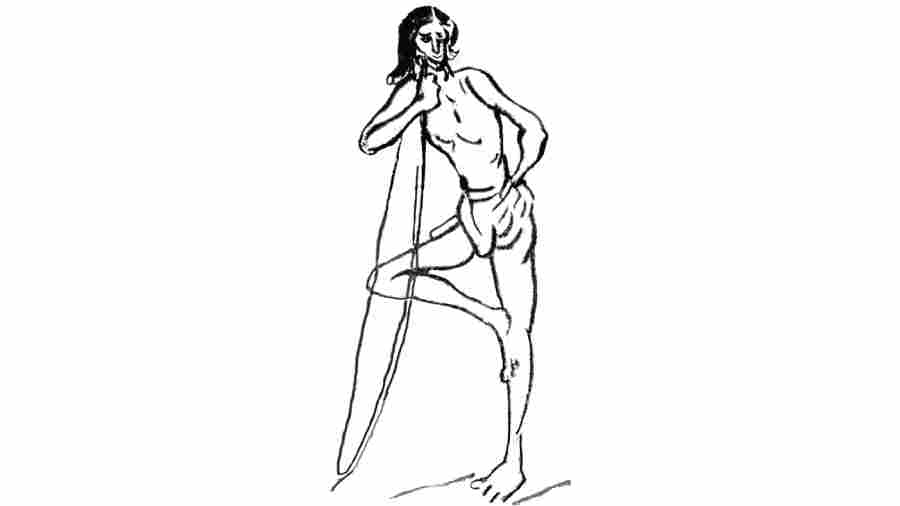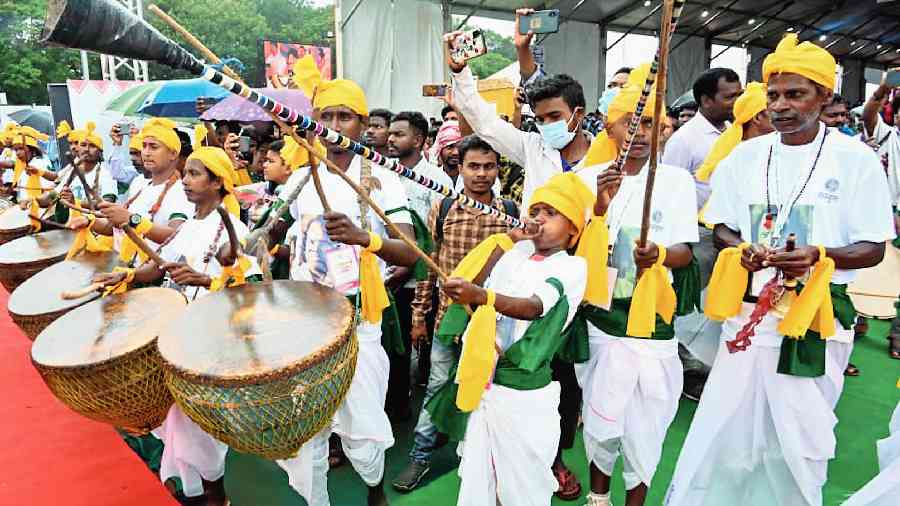The rebellion began in the Rajmahal Hills “like a sudden thunderstorm”, an apposite metaphor as monsoon rains swept across the country practically every day for the first few months. Within three weeks, in one of the fortnightly “special narratives” which formed the basis of the official advice forwarded to the Supreme Council and to the Company’s directors in London, William Grey described the Santals’ “ferocious barbarity”, the “frightful devastation” they had inflicted and the “immense plunder” they had gathered, explaining that their aim seemed to be “to set up a Rajah” and to that end to “immediately exterminate the Europeans and the Bengalees” to become “rulers of the country”.
What did the Santals seek to achieve by rising? The “spy” Ashley Eden questioned told him that “at the order of a God” they intended to kill all Europeans and native rulers and instal a king. Eden’s reliability, however, may be open to question. While an official appointed to a district in Lower Bengal in 1849 might be expected to have some knowledge of Bengali, Eden had yet to pass his Hindoostanee examination, and may not have understood even basic Santali. Living among Hindus as they did, however, many Santals spoke or could understand Hindoostanee or Bengali. Within days George Brown at Bhaugulpore had heard that the Santals were “revenging the punishment inflicted on their Comrades concerned in last year’s Dacoities”. But no one understood that the uprising represented an intensification of what social historians following Eric Hobsbawm would later call “social banditry”. The Hindoo Patriot discounted any suggestion that they could have any political agenda beyond freedom from “revenue officials, landlords and European blackguards” — the latter referring to indigo planters and railway contractors.
James Pontet, who as superintendent of the Damin lived for some of the year in Burhyte and could be expected to understand them, was spectacularly wrong a month after the Hul’s outbreak in declaring that there was “no cause for this rise but a mistaken religious one”. Pontet was an “uncovenanted” officer; that is, he was paid much less than the well-connected, Haileybury-trained covenanted officials superior to him. He had served in the Damin-i-koh for twenty-odd years but was not noted for energy or initiative. Revenue from rents certainly had increased, though not from his efforts but by the huge increase in the Santal population by both births and by the arrival of further migrants most from Chota Nagpore. A damning return in the Judicial Consultations revealed that in his legal capacity as the grand-sounding Moonsiff of the Damin, he had dealt with just two cases since his appointment in March 1855. A Judicial Department investigation in 1856 judged that Pontet had “wilfully neglected” his duties. He certainly did not cultivate sympathy with the Santals’ predicament: when a deputation had asked him to intercede because of the money-lenders’ exactions, he told them, harshly and unhelpfully, that they had “eaten the mahajuns’ advances”. “What could he do?” he asked helplessly.
Some officials, claiming a familiarity with Santals dismissed the Hul as “the impulse of the moment”, as Edward Samuells put it. Did they know of the disquiet in the Santal country before the outbreak? Vasudha Dhagamwar, in her study of Santals and the law, suggests that officials’ swift responses implies that they had known of Santal grievances but had dismissed them. Before the end of July, though, Santal leaders near Rajmahal had sent to Robert Richardson a “perwunnah” — a message or manifesto — which revealed more clearly the motivations behind the insurrection. “An old woman” came to Richardson’s cutcherry (magistrate’s office) bearing a document written in Hindoostanee, revealing that Santal leaders had literate supporters. Probably dictated by Kanhu or Sidhu, it ordered Europeans to “quit this part of the Country at once or take the consequences”. They condemned the mahajans’ exactions and oppression, called for rents to be based on a family’s capacity to pay and the productivity of their plot, and asserted the Santals’ dream of freedom: “the land does not belong to the sahebs”, it stated. Achieving that end would involve conflict — “it will rain fire”, they warned — but the Santals were fortified by sorcery: “when you fight with guns and bullets, they will not strike the Sonthals”.

A sketch by Nandalal Bose
Richardson decried this “free and easy Document” — that is, one not couched in the respectful terms usual in communicating with Company officials. But it confirmed that neither the impositions and insults of railway workers nor the “extra screw” demanded by James Pontet’s rents were at the heart of the Santal cause. However imperfect was Richardson’s translation, as one of the few authentic Santal documents it deserves to be noted…
…The “Santal War” became “the topic of the day” in the Calcutta papers, joining columns of news from the more distant theatre of war in the Crimea… From the earliest reports of rebellion in the Rajmahal hills, newspaper reports speculated about the rebels’ motives.The Santals had been described by those who knew them as truthful, uxorious, faithful, hospitable and above all peaceful. What had happened to induce them to rise so bloodily? Newspaper reports fostered intense speculation.
From the first days of the Hul, believing Santals to be, as AshleyEden put it, “a very simple people”, Europeans suspected that they must “have been put up to this”. Many letters to newspapers continued to speculate that the outbreak had been engineered by external agents. The Times even imagined“a suspicion of Nepaulese gold”, a speculation supposedly corroborated by reports of a “flat-nosed man” seen among a group of Santals… It was rumoured — on no better evidence than that horse tracks had been found — that Armenians were advising the Santals: but why would they? Or were they Russian, taking revenge for Crimean defeats, as Sergeant Joseph Cheers had heard in far-off Sealkote, though, as even The Friend of India conceded, who among the Santals was sufficiently influential to be worth bribing?
Excerpted with permission from Peter Stanley’s Hul! Hul!: The Suppression Of The Santhal Rebellion in Bengal, 1855; Published by Bloomsbury



